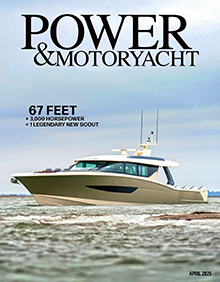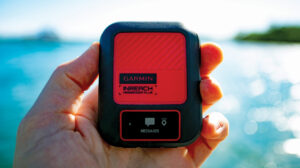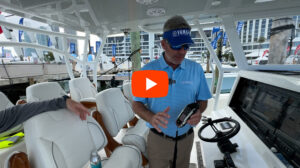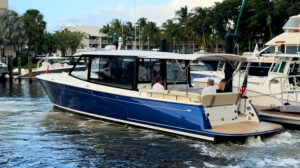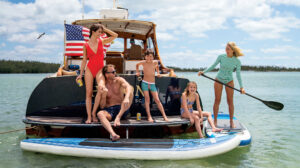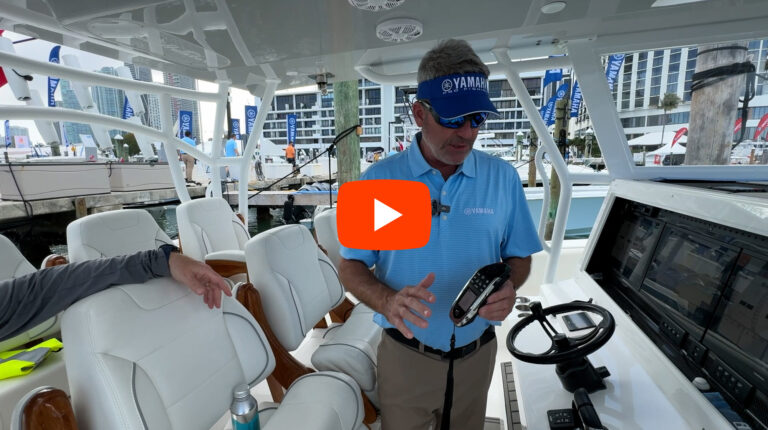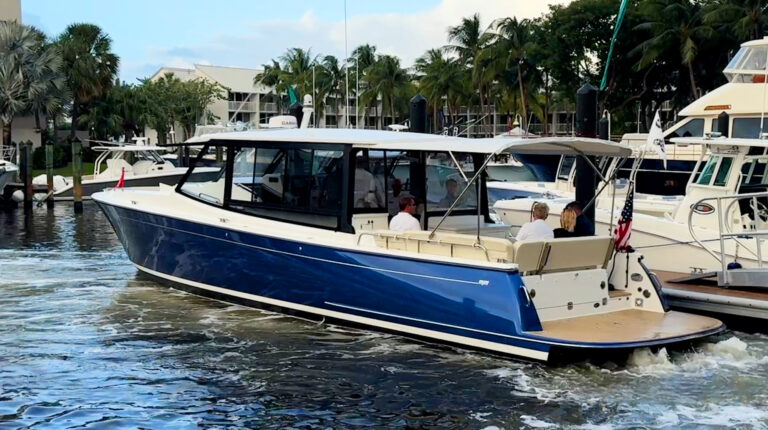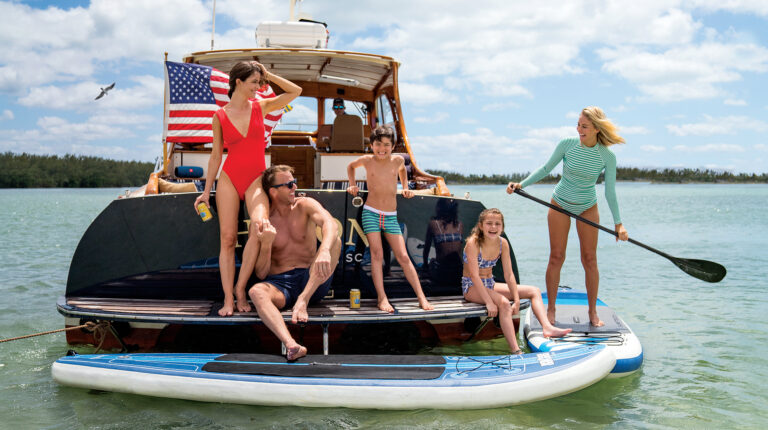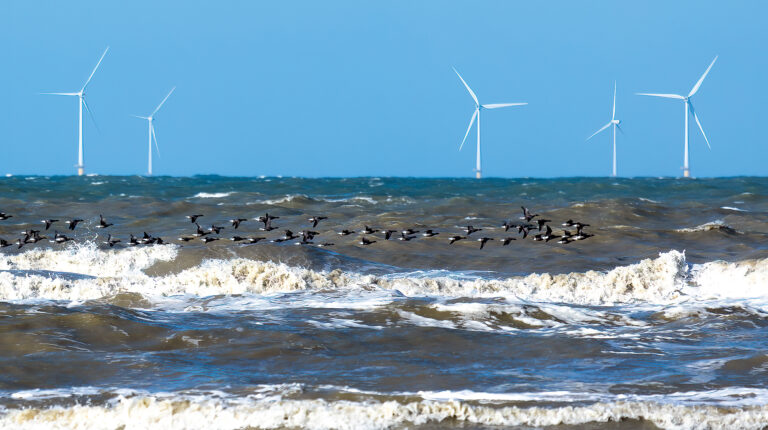
Paper or Plastic?
A surprising number of salty pros say paper charts are not always necessary.
The government agency in charge of cartography made a small stir recently when it announced that it would no longer be printing paper charts itself, effective in April. NOAA assured us that we could still buy paper charts from print-on-demand companies and that it would provide charts in electronic format to print ourselves.
In my opinion, the real stir came when the head honcho at ActiveCaptain took the NOAA announcement as an opportunity to denounce paper charts in principle. Jeff Siegel argued that carrying paper charts could actually be dangerous because paper charts cannot be updated with the latest Notice to Mariners without a great deal of effort. Better, he said, to rely on multiple electronic charting means with fully updated cartography.
ActiveCaptain is an online crowd-sourced cruising guide, and the reason that Jeff Siegel’s opinion matters is that ActiveCaptain is incorporated into many major electronic charting systems and apps, not including Navionics. He has recently signed an agreement with NOAA, allowing the agency to use ActiveCaptain data to identify trouble spots on our waterways.
Siegel is a polarizing figure, and there was an immediate backlash to his “paper is dangerous” proposition, even from his own devotees and participants in his crowd-sourcing endeavor.
So I decided to ask 13 people I consider experts for their opinions. Must we carry paper? No, yes, or does it depend? The response was surprising.
Most said we absolutely must carry paper charts, but it was a bare majority. They made all the arguments one would expect—redundancy, the ability to see the big picture, and paper’s relative immunity to disruption by atmospheric phenomena such as lightning.

Five of the people who answered my questions, however, actually said you don’t always need to carry paper, that it depends on the circumstances, and one brave retired Navy captain ventured to say that a vessel well equipped with electronics needs no paper backup at all.
Author and accomplished mariner Nigel Calder literally wrote the definitive book on the subject, How To Read a Nautical Chart. “I love electronic charts and use them all the time as my primary navigation tool,” Calder says. “I agree with Jeff’s arguments that if you have electronic redundancy this is adequate for most coastal cruising, although it would not be my preferred approach.”
Once out of sight of land, however, it’s a different story for Calder. “Just like Jeff’s multiple backups, Three Mile Island, Chernobyl, and Fukushima all had redundant layers of protection,” he says. “After playing around with electricity on boats for 30 years, I am constitutionally incapable of putting all my trust in electronics.”
Milt Baker, founder of Bluewater Books & Charts in Ft. Lauderdale, used to make a good portion of his living selling paper charts, but says he agrees with Calder. Since he sold the business, Baker has been cruising internationally aboard his Nordhavn 47 Bluewater using three independent electronic charting systems, plus paper. “I carry a big stack of backup paper charts and publications,” Baker says. “Like my friend Jeff Siegel, I’ve never once had to break out the paper charts, but the belt-and-suspenders part of me likes knowing they’re there.”
You might expect Jeff Hummel to agree entirely with the no-paper approach. He is an executive at Rose Point, purveyor of Coastal Explorer PC navigation software. Relying solely on electronic charts may be fine if SeaTow and the Coast Guard are in the neighborhood, otherwise he himself would carry a paper backup.

“In the places I plan to travel, there is no Coast Guard to come to the rescue, so I have every reasonable system and backup conceivable, including paper charts,” Hummel says. “Many religious issues involve faith; I would never try to persuade somebody to switch to my religion, nor would I try to convince anyone to carry paper charts or not. It depends on where you’re going and what you’re doing.”
Next, I asked our own senior electronics editor Ben Ellison, a veteran mariner and denizen of the fog-bound coast of Maine. It depends, Ellison says. “Declaring that it’s dangerous to carry paper charts for backup—or dangerous not to carry them at all—is ridiculous, I think,” he says. “If something goes wrong it’s the navigator who has failed, not his or her tools.”
“Personally I find paper charts great for discussing places and plans, regardless of how up-to-date they are,” Ellison says. “And I just like having them around because they’re such refined and beautiful examples of how far our forbears got with graphic data sharing in a nondigital world. Some anthropologists think it’s mapping, not language, that truly separates humans from apes.”
Ellison also faulted the more vociferous proponents of the paper-only approach. “I think the effectiveness of the older technologies is often mythologized in our world of many screens. I hear people gas on about boaters who don’t get their eyes out of the vessel, while apparently forgetting how distracting it was to, say, take and lay down three bearings on fixed objects.”
Greg Parker is the one person I asked who totally agrees with the paperless concept. In his life he’s gone from taking sun sights from the bridgedecks of small boats, to the rank of captain in the Navy, to going entirely paperless. He is now a bicoastal cruiser on a 64 Alaskan named California Sunshine. “Would a prudent engineering student procure, and learn how to operate, a slide rule as a backup to calculate complicated formulas in 2013?” he asks. “Notwithstanding my old-school education and experience with paper charts I have navigated the full length of both coasts, and parts of Mexico and the Bahamas, in the last 13 years never needing paper. I can’t disagree with Jeff Siegel. A prudent captain should not rely on paper charts as backup navigation aids in 2013.”
I suspect that if he were to undertake an oceanic crossing, Parker would revert to old-school rolled paper, so really his answer probably belongs in the “depends” column as well.
Are paper charts dangerous to boaters? Of course not. Can experienced boaters ply familiar waters navigating by electronic means alone? Of course they can. The only danger I see is that the piloting skills we learned using paper will be entirely lost to future generations—indeed many current boaters are clueless already—because those skills give us a much greater ability to interpret what we see on that glowing, 8-inch display.
This article originally appeared in the April 2014 issue of Power & Motoryacht magazine.

